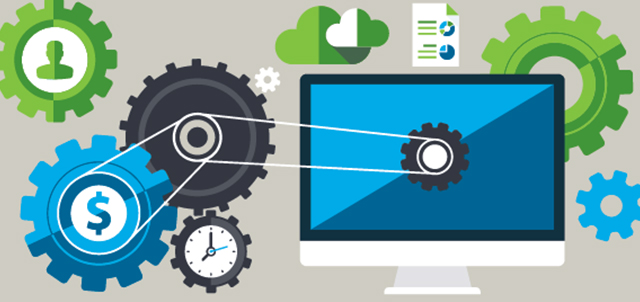One of the most difficult things to navigate in the workplace is the nuances of communication methods. With the mass, constant use of the internet today comes new ways to get in touch with people at work. What’s the most appropriate way to get in touch in a certain circumstance?
“As the person sending the message, it’s your job to select the right vehicle for what you’re trying to convey or ask.” –Kelly & Ben Decker, HBR
It’s easier to decide between a phone call versus an email, or a handwritten note versus dropping by someone’s office, but the rules get blurrier when the communication methods are more similar. With the proliferation of instant messaging apps or integrated messaging services in existing business software, it’s time to talk about when to use instant messaging (IM) versus emailing.
Benefits of Instant Messaging

Instant messaging usually takes place over an app of some sort, whether it’s Slack, Skype, Whatsapp, or any number of other options. Each person is assigned a username, and users can send each other messages instantaneously, either individually or in established groups.
Here’s why IM can be a great choice:
Casual
Instant messaging doesn’t have to be formal and structured. If it’s readable and easy to understand, it gets the job done. Whereas emojis, short form words, images (memes, GIFs, etc.), and other casual messages may not be appropriate in a work email, they’re usually acceptable in IM conversations. As long as the nature of the conversation is casual, colleagues can be more informal in their method of conversing.
Fast-Paced
The speed of instant messaging is apparent in the name. IM is perfect for getting a message to someone immediately, no questions asked. Email is also usually instant, but IM brings a higher expectation for quick responses. Plus, you can configure IMs to work as chatbots that can give out automated responses to automate customer support.
Seamless
No matter when the responses are coming, you can carry on the conversation without feeling like you have to start over again each time. Cut out all the formalities, greetings, and small talk, shortening the conversation and allowing more useful dialogue to continue seamlessly throughout the day/week.
Benefits of Emailing

Most offices have internal email servers for their employees. You probably have your own company email address, which you use for internal and external communication with everyone from co-workers to new leads and clients.
Emails give you a few advantages:
More Formal
You want something formal and official when discussing contracts, project feedback, payments, and similarly important topics. If you’re addressing new clients or outside connections you haven’t spoken to before, it’s better to do it with a more formal method in the beginning.
Predictable
Emails can be sent off easily and most people are familiar with the etiquette at this point. You can expect to get a response within a day or two during the work week. Email communication is relatively predictable and well-understood by most professionals today.
Paper Trails
It’s very easy to hold only emails containing important information. No one can delete them or make any changes to what’s already in your inbox. If you want to go back and reference something for any reason, you’ll be able to sort it into a storage file and keep track of it.
When to Use Email or IM
Despite them being fundamentally similar, email and IM have vastly different scenarios where they show their value. Email is often better for formal communication with colleagues, clients, or other connections rather than multi-person ongoing conversations.
Before you send an email, you should ask a few questions:
- How many people need this information?
- Do I need a quick response or any response at all?
- How urgent is the message?
- Who is the recipient to me?
- How long is the message I need to send?
Short messages that need a quick response, or that are urgent and need immediate attention, are better suited to instant messaging rather than email. If you’re trying to start a conversation where you’re looking for input from multiple people, IM is also probably the better medium because of how difficult it is to navigate through long strings of email responses. The exception to this would be if you’re communicating with new clients or people outside of your company.
The benefits of instant messaging mostly revolve around the speed of conversation and the informal communication style. Rather than being bogged down in a sea of formal emails, IM gets straight to the point and doesn’t take up as much of your work time.
On the other hand, an email is a perfect tool when a message needs to be broadcast without necessarily receiving a response. It’s great for reaching out to a large number of people with the same message, such as with a welcome email or a work-related announcement. Because it’s more formal, it’s also more appropriate for conversations around work proposals, HR issues, feedback, and other potentially sensitive topics.
With emails, however, you have to be sure that the emails are opened. Make sure that your welcome email subject lines are adequately tested so that you can maximize open rates. This is not an issue with IM though since the sender gets instant notifications when their messages get read.
Email leaves a convenient paper trail. IMs are difficult to trace back and follow if you want to share information with someone else or look back at the conversation for details/documents that have been shared. Long-form messages work well as emails, especially since the recipient can go back and re-read it as much as they need to.
Deliverability, obviously, can be an issue with emails. If you are using this channel to reach a large base of users or prospects, you must make sure that you use an email service that has a good reputation and a record for deliverability. This way, you can avoid your messages from ending up in spam.
Use Both, Choose Wisely
Instant messaging and email are not perfect forms of communication for all circumstances. According to recent phishing statistics, over 96% of phishing attacks come from email, and that makes it a platform that one has to be cautious about.
The benefit of IM is that it can help you reduce the number of emails you’re receiving in a day and cut down your communication time without sacrificing the information transfer. Instant messaging replaces some emails, but not all of them.
The bottom line is this: IM works best for regular team collaboration and communication, while email is still the go-to for client communication, formal notices, and informational messages for now.
Author Bio:
Nikola Baldikov is a Digital Marketing Manager at Brosix


